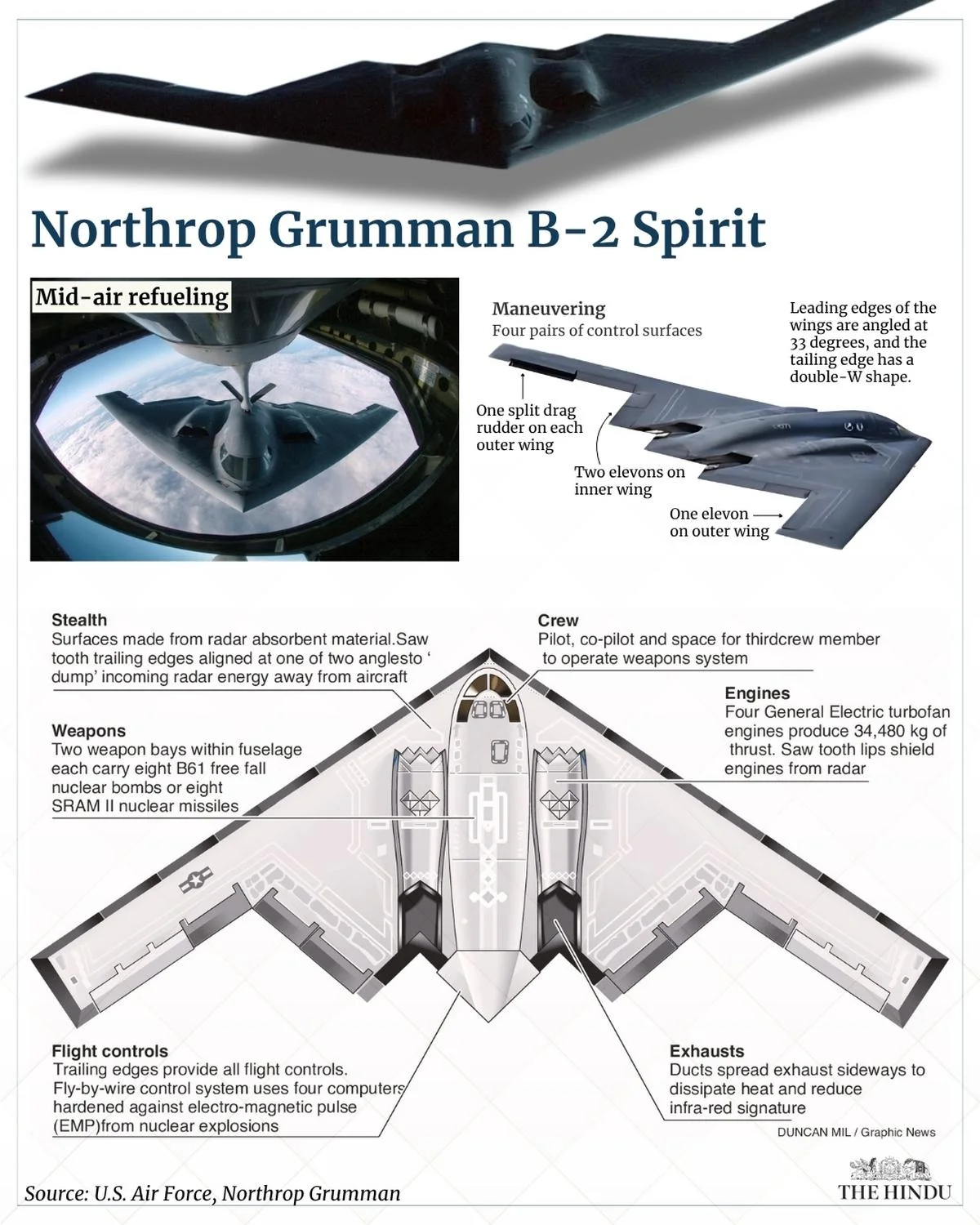Important Facts For Prelims
Strait of Hormuz
- 25 Jun 2025
- 4 min read
Source: TH
Why in News?
Under Operation Midnight Hammer, the US targeted three key Iranian nuclear facilities (Natanz, Isfahan, and Fordow). In retaliation, Iran's parliament approved a proposal to close the Strait of Hormuz.
- The US strike utilized B-2 Stealth Bombers, GBU-57 bunker buster bombs (Massive Ordnance Penetrators), and Tomahawk missiles.
What are Key Facts About the Strait of Hormuz?
- About: It is a narrow sea passage (55–95 km wide) between Iran and the Arabian Peninsula, connecting the Persian Gulf to the Gulf of Oman and the Arabian Sea.
- It serves as a vital transit route for global oil and liquefied natural gas (LNG) shipments from Persian Gulf countries.
- Global Energy Dependence: It is a critical artery for global oil transit, carrying about 20-25% of the world’s total oil supply. In 2024, approximately 20 million barrels per day passed through it.
- Major oil exporters using the Strait include Saudi Arabia, Iran, Iraq, Kuwait, UAE, and Qatar, while over 80% of this oil is destined for Asian markets, primarily India, China, Japan, and South Korea.
- India’s Dependence: Approximately 40% of India’s crude oil imports and around 54% of its LNG imports pass through this strategic passage.
- Historical Flashpoints: While a complete shutdown of the Strait of Hormuz has no historical precedent, the region has witnessed significant disruptions.
- During the Iran-Iraq War (1980–88), both sides attacked oil tankers and cargo ships in the Gulf region dubbed as Tanker War.
- In 2019, Iran seized a British tanker and has repeatedly threatened to block the Strait during geopolitical tensions, notably in 2011–12 and after US sanctions post-2018.
- During the Iran-Iraq War (1980–88), both sides attacked oil tankers and cargo ships in the Gulf region dubbed as Tanker War.
- Alternate Routes and Pipelines: Saudi Arabia (via ARAMCO) and the UAE have pipelines bypassing the Strait, while Iran uses the Goreh-Jask pipeline and Jask terminal to export oil directly to the Gulf of Oman.
B-2 Stealth Bombers
- About: It is a US Air Force strategic stealth bomber, renowned for its long range (6,000 miles), low observability, and precision strike capabilities.
- It remains the most advanced and expensive aircraft ever built, with a unit cost exceeding USD 2 billion.
- Development & Induction: The B-2, developed by Northrop Grumman, took its maiden flight in July 1989 and entered operational service in 1997.
- A total of 21 B-2 bombers were produced, with 19 currently in active service.
- Its bat-like flying wing design reduces detection and evades enemy air defenses.
- Combat Use & Strategic Role: First used in the 1999 Kosovo War, the B-2 has been deployed in Iraq, Afghanistan, Libya, Yemen, and Iran.
Massive Ordnance Penetrators (GBU-57)
UPSC Civil Services Examination, Previous Year Questions (PYQs)Q. Between India and East Asia, the navigation-time and distance can be greatly reduced by which of the following? (2011)
Which of the statements given above is/are correct? (a) 1 only Ans: (b) Q.Which one of the following can one come across if one travels through the Strait of Malacca? (2010) (a) Bali Ans: (d) |










